Jung TRUDES231 Handleiding
Jung
Thermostaat
TRUDES231
Bekijk gratis de handleiding van Jung TRUDES231 (6 pagina’s), behorend tot de categorie Thermostaat. Deze gids werd als nuttig beoordeeld door 36 mensen en kreeg gemiddeld 4.4 sterren uit 18.5 reviews. Heb je een vraag over Jung TRUDES231 of wil je andere gebruikers van dit product iets vragen? Stel een vraag
Pagina 1/6

– Display of energy consumption for electric
heating systems
– Pulse width modulation (PWM) or two-point
control system
– Adjustable cycle time (PWM), hysteresis and
minimum on/o time (two-point)
– Switch on delay, such as for burners (with two-
point control)
– Adaptation to valves normally open or closed
– Valve protection (as a room temperature
controller with and without a limiting function)
– Resetting separate from user and installer settings
Description of functions
The programmable temperature controller
automatically controls the room or oor temperature
depending on the time and day of the week. The
automated program can be interrupted at any time by
manual entries.
The temperature controller has three selectable
programs for heating which can be adapted to
your individual comfort. The controller is equipped
with an internal sensor for measuring the room
temperature. In addition, an external remote sensor
can be connected, for example to measure the oor
temperature. The temperature controller compares
the measured temperature with set values. If the
temperature falls below the current setting, the
heating system is turned on.
The depends on the type of heating control method
and is determined by the installer:
– The heating is Room temperature controller:
turned on when the room temperature falls below
the set target temperature (measured with an
internal sensor or external remote sensor).
–Floor temperature controller: The oor heating
is turned on when the oor temperature falls
below the set target temperature (measured
using an external remote sensor).
–Room temperature controller with a limiter
(in conjunction with oor heaters):
The room temperature is measured and
regulated using the internal sensor. An additional
external remote sensor is connected to measure
the oor temperature, and a target temperature
range for the oor is set. The room temperature
control is deactivated when the oor temperature
is outside of this range. If temperature falls
below this range, the heater is turned on, and if
the temperature is above this range, the heater
is turned o independent of the current room
temperature.
Operation
(9)
(10)
(11)
(12)
(13)(14)(15)(16)
(8)
Fig. 2: Default display
(8) Function display (such as the mode)
(9) Large display (such as the current temperature)
(10) Day of the week display
(1 = Monday ... 7 = Sunday)
(11) Heating mode display
(12) Display (such as the current time)
(13) O button (info/OK)
(14) + button
(15) - button
(16) M button (menu)
Safety instructions
The unit may only be opened by an electrician
and installed according to the circuit diagram on
the unit or in these instructions. Observe existing
safety instructions.
To satisfy the requirements of protection class
II, corresponding installation measures are
required.
This independently installable electronic device
is exclusively for controlling the temperature in
dry, enclosed rooms with normal surroundings.
This device is in conformance with EN 60730 and
functions according to operating mode 1C.
Damage to the device, re or other hazards may
arise if these instructions are not followed.
These instructions are a component part of the
product and must remain with the end customer.
Structure of the device
(2)
(3)
(1)
(4)
(5)
(6)
(7)
Fig. 1: Layout of the temperature controller
(1) Controls
(2) Display
(3) Control buttons
(4) Plug-in contacts
(5) Design frame (not including delivery)
(6) Socket for the plug-in contacts
(7) Use
Function
Correct use
– Measuring and controlling the room temperature
– Measuring and controlling the oor temperature
– Room temperature control via oor heating with
a limiting function (for example in conjunction
with tiled stoves)
– Can be used for “heating only” or “cooling only”
– Installable in a box in conformance with
DIN 49073
– Only for use in dry, enclosed rooms
Product characteristics
– Large display with backlighting
– Text display for self-explanatory operation
– Programmable even when the controls are
removed
– Dierent user languages can be selected
– Real-time clock with automatic switchover to/
from daylight savings time
– Internal temperature sensor
– An external remote sensor can be connected
– Three selectable and adjustable time
temperature programs for automatic mode
– A maximum of nine operating times per day (the
setting can also be terminated after a specic
operating time)
– Can be individually programmed every day, or a
block of operating times can be set: workdays/
non-workdays, all days the same
– Can be manually adjusted at any time
– “Vacation” mode with the entered date (from/to)
– “At-home” mode (present)
– Short-time timer (“party function”)
– Optimum start” function (the temperature is
reached at the set time)
– Protection against frost
Universal room temperature controller
with display
Ref.-no.: TR UD .. 231 ..
Operating instructions
GB
ALBRECHT JUNG GMBH & CO. KG
Volmestraße 1
58579 Schalksmühle
GERMANY
Tel. +49 2355 806-0
Fax +49 2355 806-204
kundencenter@jung.de
www.jung.de
08/2015
0024073501

Basic information
Four buttons below the display are used to operate
the temperature controller (Fig. 2, items (13) to
(16)). In the menu, you can activate operating
modes, adapt programs and make settings. If a
button is not pressed for more than three minutes,
the unit automatically switches back to the previous
function and the default display (Fig. 2). Program 1
and AUTO mode are the preselected defaults; see
“Default programs” and “Modes and setting menus
(overview 1)”.
Programming when the controls are removed
The unit can also be programmed when the
controls are removed. The current temperature is
not displayed, the “heating mode” display ashes,
and the display is not illuminated. If a button is not
pressed for more than three minutes, the display
goes dark.
Display information on the current mode
W To go to the default display when the controls
are removed and the display is dark, press any
button.
• Press O in the default display.
Information on the current mode/setting is
displayed in the form of a marquee.
• Return to the default display by pressing
O.
Selecting modes and setting menus
• Press M in the default display.
MENU briey appears in the function display (8).
A help text as a marquee appears at the bottom
edge of the display.
Use the + /
- buttons to switch to the desired
mode/setting.
• Select the desired mode/setting by pressing
O.
Another menu opens depending on the mode/
setting.
• Go back to the last display/setting by
pressing M.
• Return to the default display by pressing
M
several times.
Manually adapting the target temperature
You can always adapt the target temperature in
modes AUTO, MAN and TIMER.
• In the default display, press
+ or -.
The current target temperature ashes.
• Set the desired temperature by pressing
+ /
-.
• Accept the displayed temperature by pressing
O
.
The device returns to the default display.
Turning o the controls
• In the default display, press the
M button for
10 seconds.
First “MENU” appears in the display. After
10 seconds, the device switches to the default
display and “OFF” appears.
• Turn the controls back on by selecting a mode.
Default programs
The controller oers three default time/temperature
programs (full-day settings). These full-day settings
depend on the selected heating mode (installer
settings, H1) and can be selected by the user
and adapted to individual heating preferences
(user settings, G1 and G2). The factory setting is
program 1.
The default time/temperature programs are illustrated
in the following in sections in graphs and tables.
A specic example is used (room temperature
controller) for program 1 to explain the full-day
settings.
Programs for room temperature controller with
and without a limiting function
Program 1
Mon – Fri
Sat – Sun
Switching
time
Time of
day
T°C Time of day T°C
1 06:00 21.0 07:00 21.0
2 08:30 18.0 10:00 18.0
3 12:00 21.0 12:00 21.0
4 14:00 18.0 14:00 21.0
5 17:00 21.0 17:00 21.0
6 22:00 15.0 Sat, 23:00
Sun, 22:00
15.0
Table 1:
Full-day settings for program 1, room temperature
controller
Program with six switching times. “Comfortable
temperature” 21 °C, temperature lowered to 18 °C in
the morning and afternoon of work days (absent) and
lowered daily at night to 15°C.
Program 2
Mon – Fri
Sat – Sun
Switching
time
Time of
day
T°C Time of day T°C
1 06:00 21.0 07:00 21.0
2 08:30 18.0 Sat: 23:00
Sun: 22:00
15.0
3 12:00 21.0
4 14:00 18.0
5 17:00 21.0
6 22:00 15.0
Table 2:
Full-day settings for program 2, room temperature
controller
Program 3
Mon – Fri
Sat – Sun
Switching
time
Time of
day
T°C Time of day T°C
1 06:00 21.0 07:00 21.0
2 08:30 18.0 10:00 18.0
3 17:00 21.0 12:00 21.0
4 22:00 15.0 Sat, 23:00
Sun, 22:00
15.0
Table 3:
Full-day settings for program 3, room temperature
controller
Programs for the oor temperature controller
Program 1
6:00
14
16
18
20
22
24
26
27
28
°C
8:00 10:00 12:00 14:00 16:00 18:00 20:00 22:00 h
25
23
21
19
17
15
Mon – Fri
Sat – Sun
Switching
time
Time of
day
T°C Time of day T°C
1 06:00 28.0 08:00 28.0
2 08:00 18.0 10:00 18.0
3 19:00 28.0 19:00 28.0
4 22:00 15.0 22:00 15.0
Table 4: Full-day settings for program 1, oor
temperature controller
Program 2
6:00
14
16
18
20
22
24
26
27
28
°C
8:00 10:00 12:00 14:00 16:00 18:00 20:00 22:00 h
25
23
21
19
17
15
Mon – Fri
Sat – Sun
Switching
time
Time of
day
T°C Time of day T°C
1 06:00 28.0 08:00 28.0
2 08:00 18.0 10:00 18.0
3 12:00 28.0 12:00 28.0
4 14:00 18.0 14:00 18.0
5 19:00 28.0 19:00 28.0
6 22:00 15.0 22:00 15.0
Table 5: Full-day settings for program 2, oor
temperature controller
Program 3
6:00
14
16
18
20
22
24
26
27
28
°C
8:00 10:00 12:00 14:00 16:00 18:00 20:00 22:00 h
25
23
21
19
17
15
Mon – Fri
Sat – Sun
Switching
time
Time of
day
T°C Time of day T°C
1 11:00 28.0 08:00 28.0
2 13:00 18.0 10:00 18.0
3 22:00 15.0 19:00 28.0
4 22:00 15.0
Table 6: Full-day settings for program 3, oor
temperature controller

Select program (G1)
W The factory setting is program 1.
The device is in the default display.
Press the M button.
The help text “MENU...” appears at the bottom
edge of the display.
• Press + /
- to select the settings menu USER
SETTINGS and conrm with
O.
G1 - PROGRAM SELECT ONE appears.
Press the O button.
The number of the active program ashes.
• Press + /
- to select the desired program
(1 ... 3) and conrm with
O.
G1 - PROGRAM SELECT ONE appears.
The selected program is now active.
Adapting the program (G2)
The default programs can be adapted to individual
heating comfort. A maximum of 9 switching times/
intervals per day are possible. All adaptations
aect the active program. When you switch to new
program, the adaptations are not saved; that is, any
adaptations made to a default program must be
recongured.
The desired program is active (G1), and G1 -
PROGRAM SELECT ONE appears.
• Press the + button.
G2 - EVENT SETTING appears.
• Press O to select menu item G2.
DAY is displayed, and the day of the week
display (10) ashes.
The numbers correspond as follows: 1 Monday, 2
Tuesday... 7 Sunday.
W With the exception of individual weekdays,
switching times can also be set for blocks of
days 1-5, 6-7, 1-7.
• Press + /
- to select the desired day/block of
days, and conrm with
O.
The temperature display (9) for the rst switching
interval of the day ashes.
• Press + /
- to set the desired temperature and
conrm with O.
The starting time of the switching interval
ashes.
• Press + /
- to set the desired start time and
conrm with O.
The ending time of the switching interval ashes.
• Press + /
- to set the desired ending time and
conrm with O.
The rst switching interval is now set. The
temperature display for the second switching
interval ashes.
If needed, additional temperatures and switching
times can be set using the same procedure. The
number of the switching interval is displayed in the
bottom line of the display in front of the switching
times. The respective end time in the display is
becomes the start time of the next interval. Each
switching time can be decreased to the previous time
or to 00:00, and increased to a maximum of 23:50.
If ->>> ashes in the display, the following switching
time falls within the next weekday.
• Press O to go to the rst start time of the next
day of the week.
• Press + /
- to create a dierent switching
interval.
If all 9 switching times of the day are already
assigned, the program automatically jumps to the
next day of the week. You can delete a switching
interval indirectly by increasing the previous interval.
Repeatedly press
M to leave menu item G2 - EVENT
SETTING. The settings take eect.
Main menu
Modes and setting menus (overview 1).
To follow is an overview of the modes and setting
menus within the main menu.
AUTO
Automatically control the room temperature ac-
cording to the time and temperature settings of the
selected program. Adapt the temperature to the
next to switching time (see "Manually adapt the
target temperature").
A minus sign following the "AUTO–" mode in the
display indicates that the target temperature has
been adapted and that it deviates from the tempera-
ture saved in the time/temperature program until the
next switching time.
MAN
Manually control the room temperature independent
of the time to the value set here (see "Manually
adapt target temperature".)
TIMER
Short-time timer to specify the room temperature for
a set number of hours ("Party function").
• Press + /
- to set the hours and conrm with
O.
• Press + /
- to set the temperature and con-
rm with O.
The display (12) shows the number of remain-
ing hours.
Subsequently adapt the temperature for the
remaining hours (see "Manually adapt the target
temperature").
HOLIDAY
Specify a room temperature for a set time interval
with the start and end date of vacation. Until vaca-
tion starts, the currently set mode is active: AUTO,
MAN, TIMER, AT HOME. Start HOLIDAY when the
start date is reached.
• Set the year, month, day for the rst and last
day of vacation with + /
- and conrm with O.
• Press + /
- to set the temperature and con-
rm with O.
"V." and the date of the last day of vacation is
shown in the displays (8) and (12).
AT HOME
Control the temperature independent of the day of
the week according to the time and temperature in-
formation in the selected program (full-day setting).
The program defaults correspond to the current day
program of Monday.
• Set the temperature and switching times with
+ / - and conrm with O.
Activate the mode "AT HOME" by conrming
the last switching time. The function display (8)
shows "HOME".
USER SETTINGS
Open the menu for the user settings.
The display (9) shows the menu ID G1.
• To select the desired submenu, see "User
settings".
INSTALLER SETTINGS
Open the setting menu for the installer.
The display (8) shows the menu ID H1.
• To select the desired submenu, see "Installer
settings".
Overview 1: Modes and setting menus
Select the desired mode/setting menu
The device is in the default display.
• Press the M button.
The help text “MENU...” appears at the bottom
edge of the display.
• Press the buttons + / - until the desired menu
item (mode or setting menu) appears.
• Conrm with O.
The function is activated in modes AUTO and
MAN.
With the other menu items, the device jumps to
additional settings (see overview 1).
User settings
Overview 2
A marquee at the bottom of the display shows
information for an individual menu items identied
with G1 to G16.
W Depending on the set control procedure, the
menu items G11 and G12 are not available.
(The menu displays and set all values are in
UPPERCASE, and the settings are
bold
)
G1 PROGRAM SELECT ONE
Choose one of the default time/temperature pro-
grams (see "Select program"):
1
, 2, 3.
Select the program number with + /
-, conrm
with O.
G2 EVENT SETTING
Adjust a default time/temperature program (see
"Adapt program"):
Adjust the days of the week, temperatures, switch-
ing times with + /
-, conrm with O.
G3 CLOCK SETTING
Set the date and time.
Set the YEAR, MONTH, DAY, HOUR, MINUTE with
+ /
- and conrm with O.
G4 OFF HEATING PERMANENT
Turn o the temperature control:
– YES = Control o
–
NO
= Control on
Select YES/NO with + /
-, conrm with O.
If OFF HEATING PERMANENT = YES is selected,
the frost protection is active provided that it has
been set by the installer, see also Installer settings
H6 - FROST PROTECTION ≠ OFF
Display function (8): OFF
Turn on the control: Select a function using the
menu, or hold
M for 10 s.
G5 SUMMER/WINTER TIME CHANGE
Set whether the switchover from/to daylight savings
is automated.
–
YES
= automated
– NO = not automated
Select YES/NO with + /
-, conrm with O.
G6 KEY LOCK
Protect the controller from unauthorized use. Use is
not possible when access protection is enabled.
– YES = access protection on
–
NO
= no access protection
Select YES/NO with + /
-, conrm with O.
Remove access protection: Press any button, and
when CODE is displayed, set 93 with
+ /
- and
conrm with O.
G7 TEMP LIMIT MIN/MAX TEMP
Set the bottom and top temperature to be regulated:
– LOWER TEMP LIMIT:
For the room temperature controller
(H1 = ROOM or LIMITER):
5.0°C
, 5.5°C … 30.0°C
For the oor temperature controller
(H1 = FLOOR):
10.0°C
, 10.5°C … 40.0°C
– UPPER TEMP LIMIT:
For the room temperature controller
(H1 = ROOM or LIMITER):
5.0°C, 5.5°C …
30.0°C
For the oor temperature controller
(H1 = FLOOR):
10.0°C, 10.5°C …
40.0°C
Set the temperatures with + /
- and conrm with O.
The controls in the modes AUTO, MAN, TIMER etc.
are limited to the temperature range set here.
G8 COSTS /HR OF ENERGY
Enter the estimated energy costs per hour for the
room in which the temperature is being controlled:
1, 2, ...
100
... 999 CENT/HR
W If the energy cost meter is to serve as an oper-
ating hour meter, set the value COST/h to 100.
Set COST/HR with + /
-, conrm with O.
The determined use is displayed under G9.
Product specificaties
| Merk: | Jung |
| Categorie: | Thermostaat |
| Model: | TRUDES231 |
Heb je hulp nodig?
Als je hulp nodig hebt met Jung TRUDES231 stel dan hieronder een vraag en andere gebruikers zullen je antwoorden
Handleiding Thermostaat Jung

6 December 2023

6 December 2023

13 Augustus 2023

13 Augustus 2023

26 Mei 2023

26 Mei 2023

20 Mei 2023

10 Mei 2023

7 Mei 2023

5 Mei 2023
Handleiding Thermostaat
- Meross
- Grasslin
- Energenie
- 2Heat
- Heidenfeld
- ThermoSmart
- Agpo Ferroli
- Wachendorff
- Oertli
- Landis Gyr
- Go Green
- Plieger
- Homematic IP
- Emko
- Intertechno
Nieuwste handleidingen voor Thermostaat
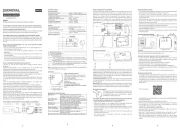
31 Juli 2025
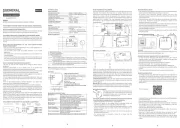
30 Juli 2025
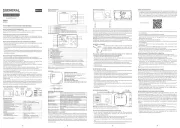
29 Juli 2025
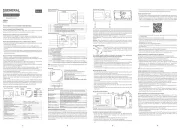
29 Juli 2025
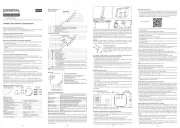
28 Juli 2025
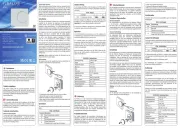
28 Juli 2025
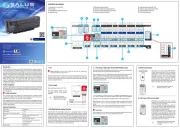
28 Juli 2025
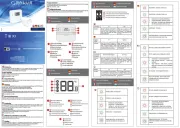
28 Juli 2025
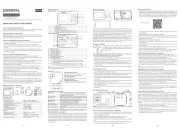
28 Juli 2025
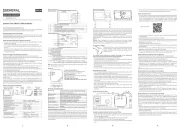
28 Juli 2025